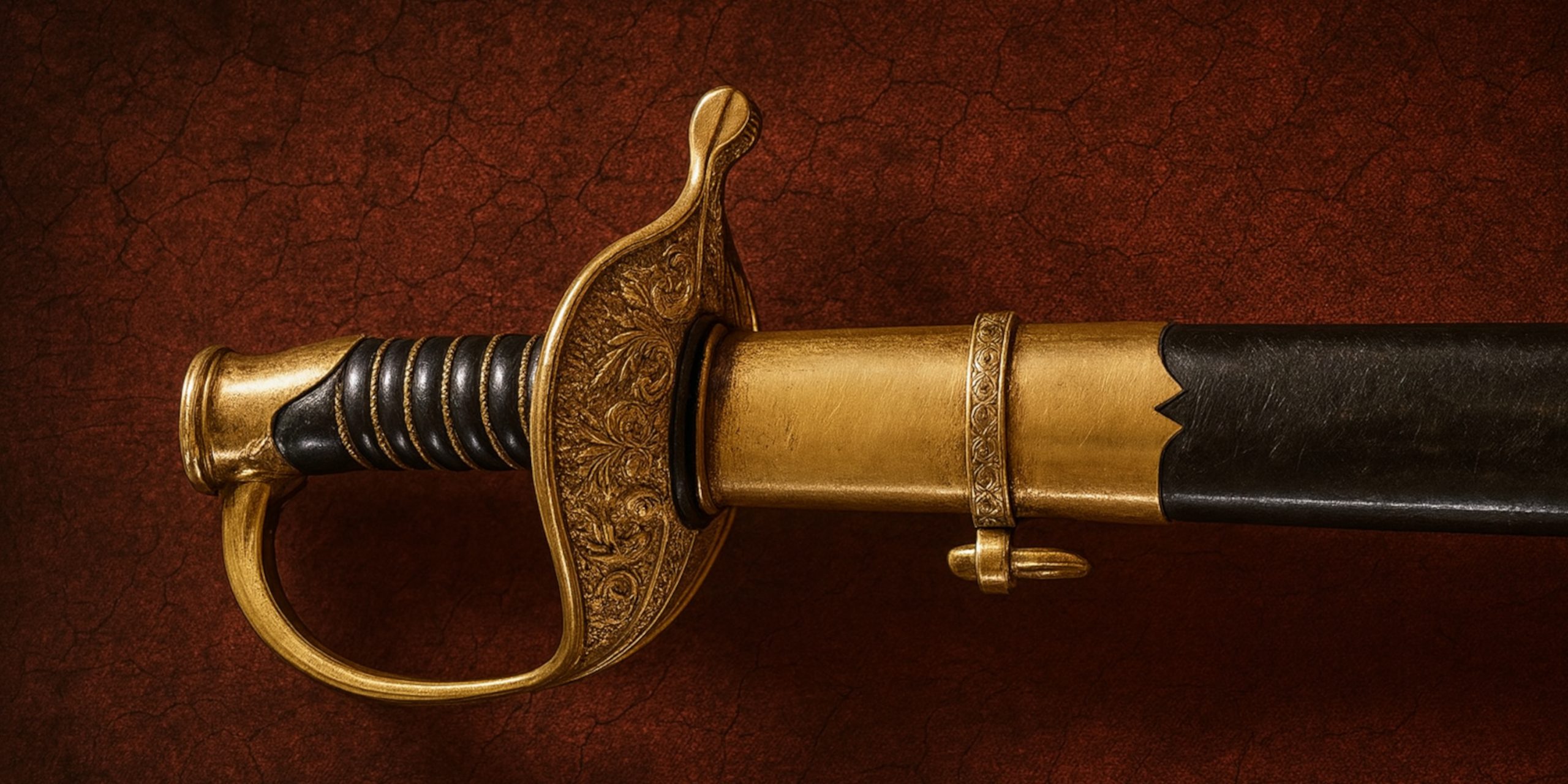
Among the array of blades carried during the American Civil War, few capture the regional pride of the Confederacy like the Palmetto officer’s sword. Named after South Carolina’s state emblem, this weapon stood as both a practical sidearm and a political statement. Produced in limited numbers under dire wartime constraints, it remains a tangible reminder of Confederate identity, resourcefulness, and the industrial challenges faced by the South.
While it borrowed heavily from European and Union designs, the Palmetto sword possessed distinctive Southern flair. Today, it is as much a collector’s curiosity as it is a symbol of a fractured nation’s brief and turbulent history.
Specifications
| Feature | Description |
|---|---|
| Type | Confederate Officer’s Sword |
| Origin | South Carolina, Confederate States of America |
| Manufacturer | Palmetto Armory (Columbia, South Carolina) |
| Production Period | Circa 1852–1863 (pre-war through Confederate era) |
| Blade Length | Approximately 31–33 inches (varies by example) |
| Overall Length | Roughly 37–39 inches |
| Blade Type | Single-edged, slightly curved, fullered |
| Hilt Type | Brass guard with “Palmetto tree” emblem; leather grip with twisted brass wire |
| Scabbard | Brass-mounted leather or all-brass variant |
| Weight | Around 2.5 lbs |
| Markings | Often etched with “Palmetto Armory” and state motifs |
History and Evolution
The Palmetto officer’s sword originated from antebellum South Carolina’s effort to arm its militia independently of federal suppliers. The Palmetto Armory, founded in the early 1850s, was contracted to produce firearms and swords patterned on U.S. models but adapted to local symbolism.
- Pre-war Origins:
The initial production run, circa 1852, was linked to South Carolina’s state militia. The sword followed the U.S. Model 1850 Foot Officer’s pattern but replaced the federal eagle with the Palmetto tree symbol. - Civil War Adaptation:
When the Confederacy was formed, Palmetto swords became a de facto officer’s blade for South Carolinians and select Confederate units. Due to limited industrial capacity, the Palmetto Armory ceased operations by 1863, making later swords rarer and often privately purchased. - European Influence:
The design took cues from French and British sabres, especially the French Model 1845. Its elegant curve and etched motifs reflected European craftsmanship ideals, though Southern production standards were more modest.
Advantages and Disadvantages
| Advantages | Disadvantages |
|---|---|
| Symbolic state pride and identity | Inconsistent craftsmanship due to wartime scarcity |
| Lightweight and balanced for officers on foot | Brass hilts were prone to bending under stress |
| Elegant design with distinctive Palmetto etching | Edge retention and steel quality varied widely |
| Suitable for both ceremonial and combat use | Inferior compared to Northern or imported blades |
Comparison with Similar Weapons
| Sword Type | Origin | Key Difference | Assessment |
|---|---|---|---|
| U.S. Model 1850 Foot Officer’s Sword | Union | Federal eagle guard, higher-quality steel | Better fit and finish, mass-produced |
| French Model 1845 Infantry Officer’s Sword | France | Fuller, longer blade, ornate etching | More refined craftsmanship |
| Confederate Leech & Rigdon Sword | Tennessee | Heavier brass hilt, less refined detail | More robust but less elegant |
| Palmetto Officer’s Sword | South Carolina | Distinctive Palmetto emblem, local pride | Symbolic, collectible, regionally unique |
Legacy
The Palmetto officer’s sword is remembered less for battlefield use and more for what it represented: Southern self-reliance and defiance. It bridged a gap between ceremonial dignity and the brutal reality of a war that strained the Confederacy’s every resource.
- Its design became an emblem of South Carolina’s martial identity, appearing on later commemorative swords and state regalia.
- Surviving examples are scarce and highly valued by collectors for their artistry and historical resonance.
- The sword’s limited production makes it a key artefact in the study of Confederate material culture and Southern industrialisation efforts during the 19th century.
Where to See One
| Location | Exhibit / Note |
|---|---|
| South Carolina Confederate Relic Room & Military Museum (Columbia, SC) | Houses original Palmetto Armory examples |
| Museum of the Confederacy (Richmond, VA) | Features Confederate officer swords including Palmetto variants |
| Smithsonian National Museum of American History (Washington, D.C.) | Occasional display in Civil War arms collection |
| Private Collections & Auctions | Rarely surface, often with state provenance certificates |
Collector’s Guide
What to Look For
- Authentic Palmetto tree motif on guard or blade etching
- Brass hilt with clear casting lines
- Intact scabbard fittings and leather wrap
- Faint but legible Palmetto Armory markings
- Provenance linking to South Carolina officers
Rarity and Value
| Condition | Typical Auction Range (USD) | Notes |
|---|---|---|
| Excellent (museum-grade) | $20,000–$30,000 | Original scabbard, clear etching |
| Good (collector-grade) | $10,000–$18,000 | Minor wear, partial etching loss |
| Fair (restored or incomplete) | $4,000–$8,000 | Missing scabbard or grip wire |
| Reproduction / Modern Copy | $300–$800 | Decorative only, no collector value |
Collector Notes
- Provenance is critical. Unverified swords are often misattributed.
- Avoid over-polishing or restoration, as patina confirms authenticity.
- Many surviving examples were ceremonial, not combat-used, which affects valuation differently depending on collector focus.
The Seven Swords Takeaway
The Confederate Palmetto officer’s sword remains a striking relic of ambition and identity amid wartime adversity. It embodied South Carolina’s attempt to forge its own martial path and stands today as both a historical artefact and a rare collectible.
Elegant, flawed, and fiercely regional, the Palmetto sword reflects the contradictions of the Confederacy itself, proud craftsmanship shaped by scarcity, and beauty tempered by necessity.



